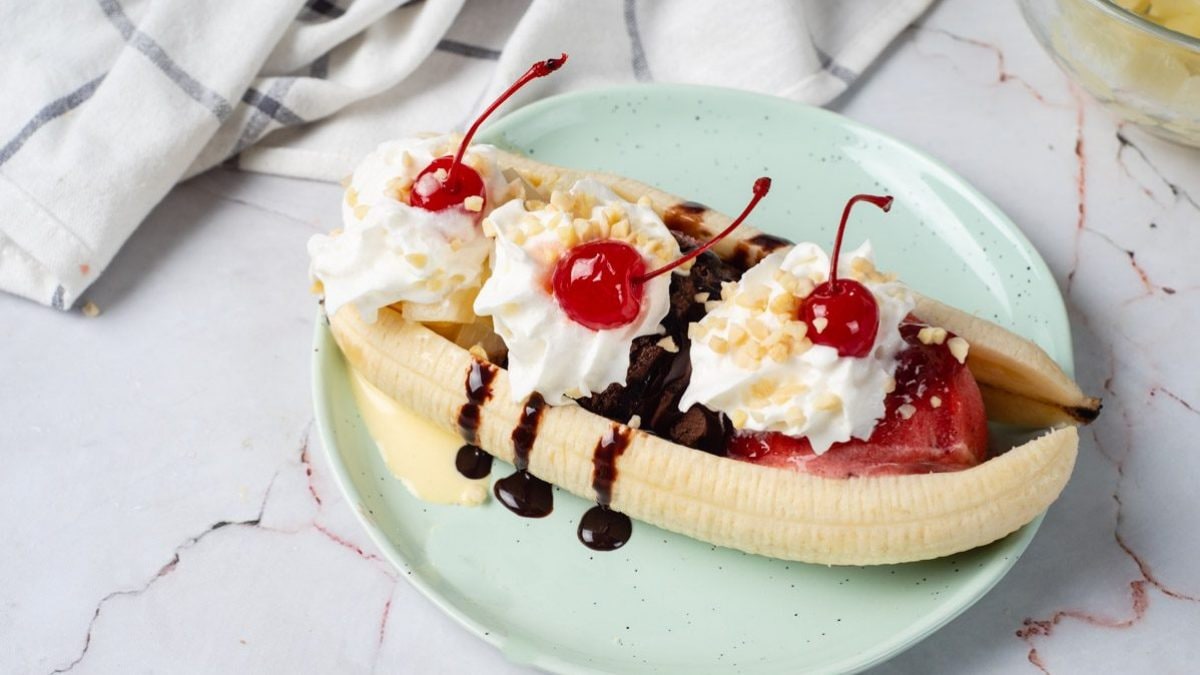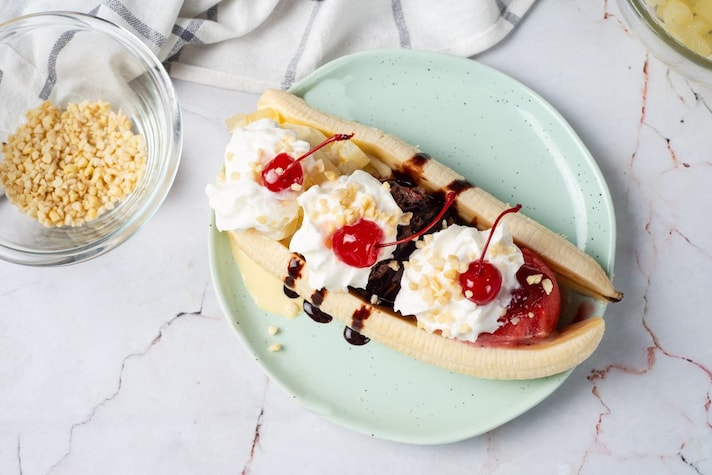
The banana split is one of those desserts that brings to mind a cheerful mix of nostalgia, indulgence, and, of course, a sense of celebration. It’s hard to resist the combination of ripe bananas, creamy ice cream, and a cascade of sweet toppings. But while it’s a treat that has delighted dessert lovers for over a century, the story of its origin is just as rich and layered as the dessert itself. So, who invented the banana split? The answer isn’t as simple as it might seem, but its story is just as delicious as the treat.
A Sweet Start in Latrobe, Pennsylvania
The most widely accepted origin of the banana split points to a man named David Evans Strickler, a young pharmacist working at Tassel’s Pharmacy in Latrobe, Pennsylvania, in 1904. Strickler, like many pharmacists of the time, would mix up sodas and concoctions behind the counter for customers. One day, he decided to get creative and created a dessert by splitting a banana lengthwise and topping it with three scoops of ice cream, hot fudge, strawberry syrup, and whipped cream, finished with a maraschino cherry. It was a moment of brilliance, and Strickler’s banana split quickly became a hit in the small town. He even sold it for a mere 10 cents—a small price for such a decadent treat.
An Argument for Two Inventors
However, the title of "creator" has been contested by others, particularly a man named Ernest R. Hazard. Some claim that Hazard, an ice cream parlour owner in the nearby town of Two Rivers, Wisconsin, should also receive credit for inventing the banana split. In 1902—two years before Strickler—the story goes that Hazard created a similar dessert at his shop, but he used only two scoops of ice cream and offered it as a special for the local college students. He even set the price at 10 cents, just like Strickler did. While there isn’t much concrete evidence to back this up, the town of Two Rivers continues to celebrate itself as the "Banana Split Capital of the World."

The Birth of the Banana Split as We Know It
Despite the conflicting claims, Strickler’s version of the banana split is the one that became widely known and adored. It wasn’t just a novelty treat—it symbolized a new era of creativity in American dessert culture. The ice cream parlor became a social hub where families, couples, and friends gathered to enjoy sweet treats, and the banana split fit perfectly into this scene. By the 1920s, the dessert had already gained widespread popularity across the U.S., with many regional variations cropping up to cater to local tastes.
Banana Split Goes Mainstream
By the time the banana split made its way to soda fountains and ice cream parlors across the country, it was a full-fledged dessert sensation. The combination of rich flavors, the contrast of textures, and the visual appeal of the layered creation made it a favorite of all ages. Its rise in popularity can be attributed in part to the development of marketing strategies and the booming ice cream industry in the early 20th century. The banana split was featured in advertisements, and soon, it wasn’t just a treat for the elite; it was affordable for families everywhere.
By the 1930s, the dessert had transcended regional boundaries. It became an essential part of American dining culture, with numerous restaurants and ice cream chains serving it. The American public’s love for this treat only deepened over the decades, ensuring its place as one of the most beloved sundaes in the world.

Banana Split Today: A Timeless Favorite
The banana split has stood the test of time. Today, it remains a staple at ice cream parlors, fast-food restaurants, and even fast-casual eateries. The dessert has undergone countless variations, some more decadent than others. Whether it's a traditional split or a contemporary version with exotic fruit or gluten-free ingredients, the essence of the original remains the same: three scoops of ice cream, a banana, and an indulgent assortment of toppings.
;Resize,width=767;)
